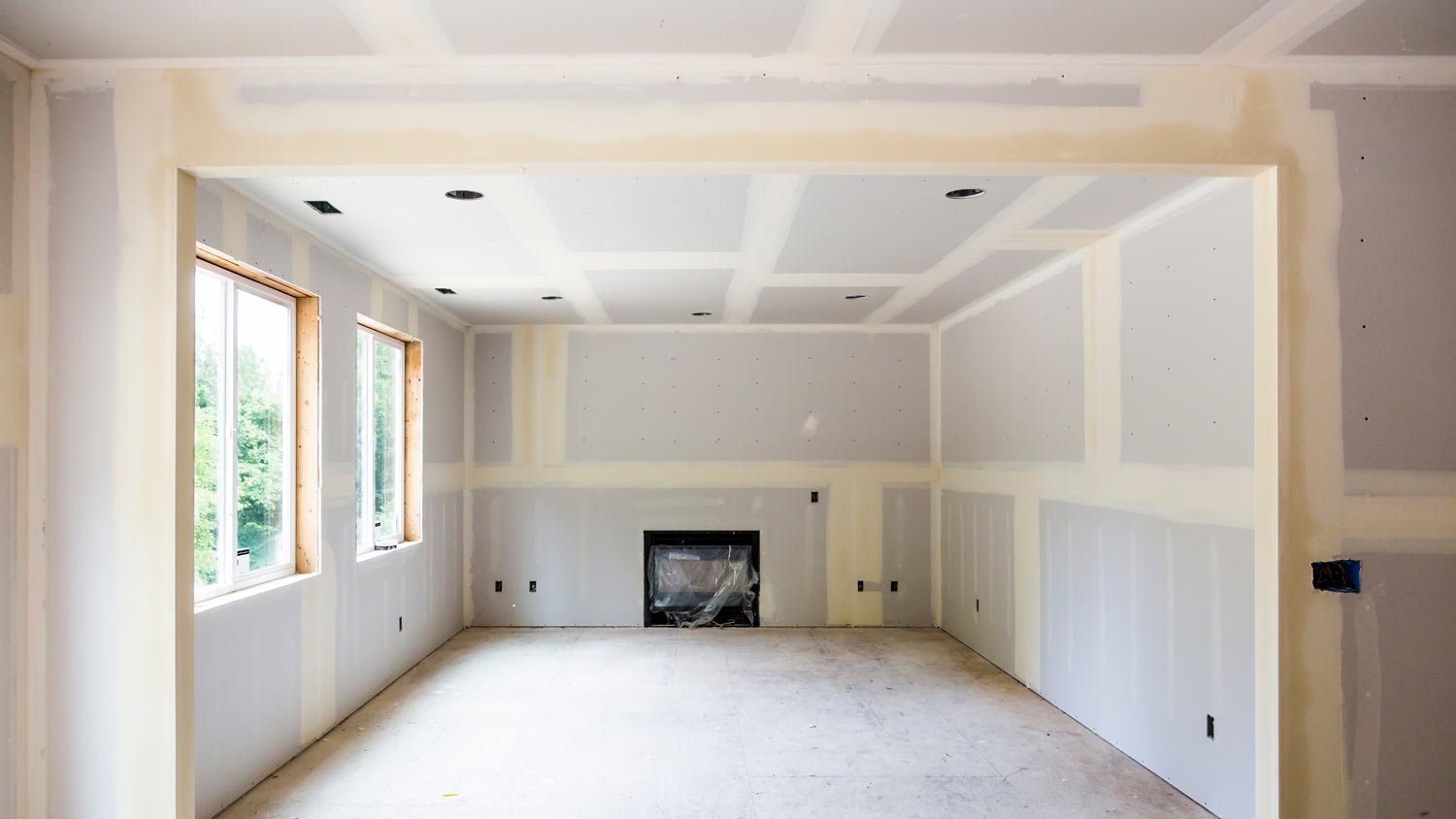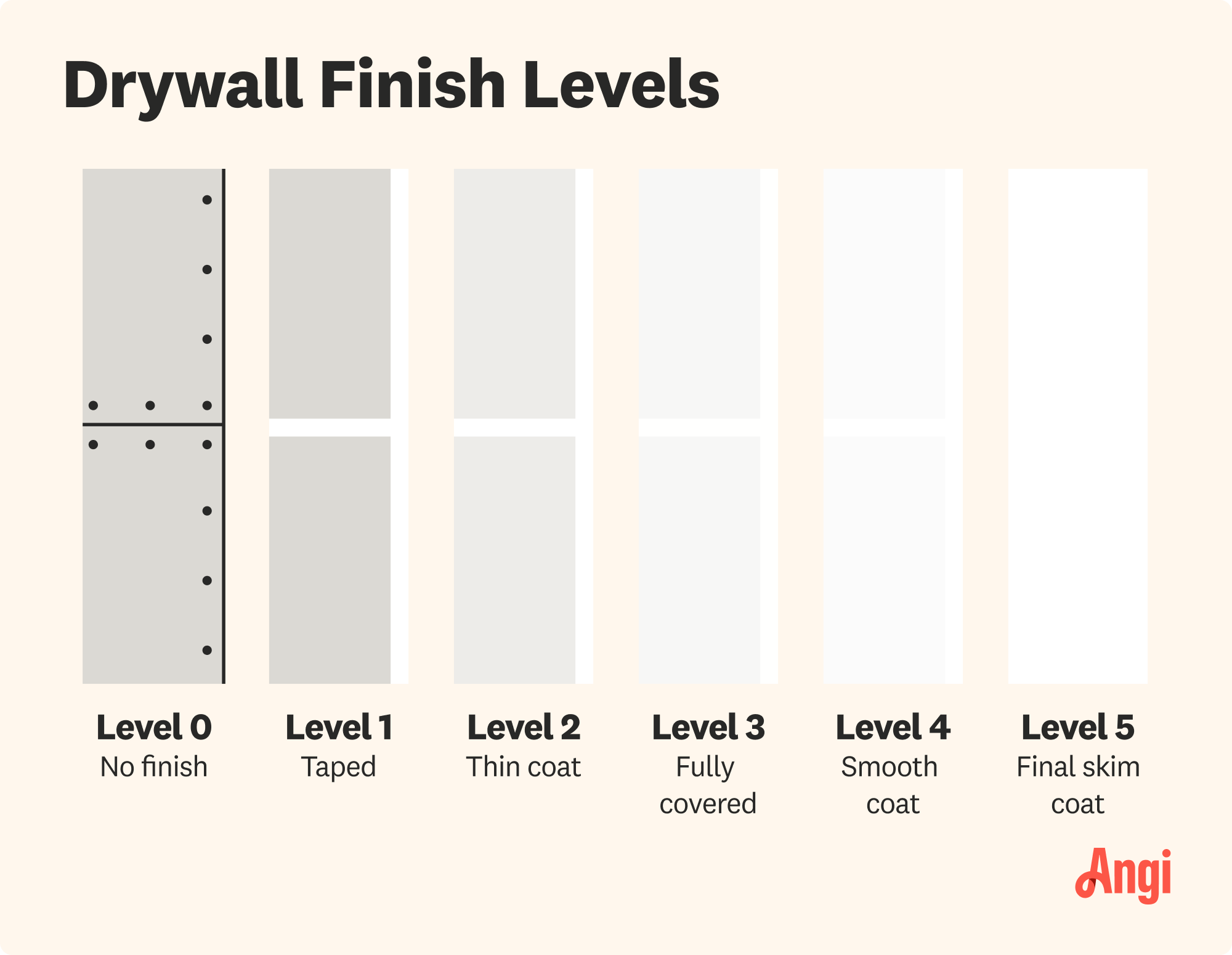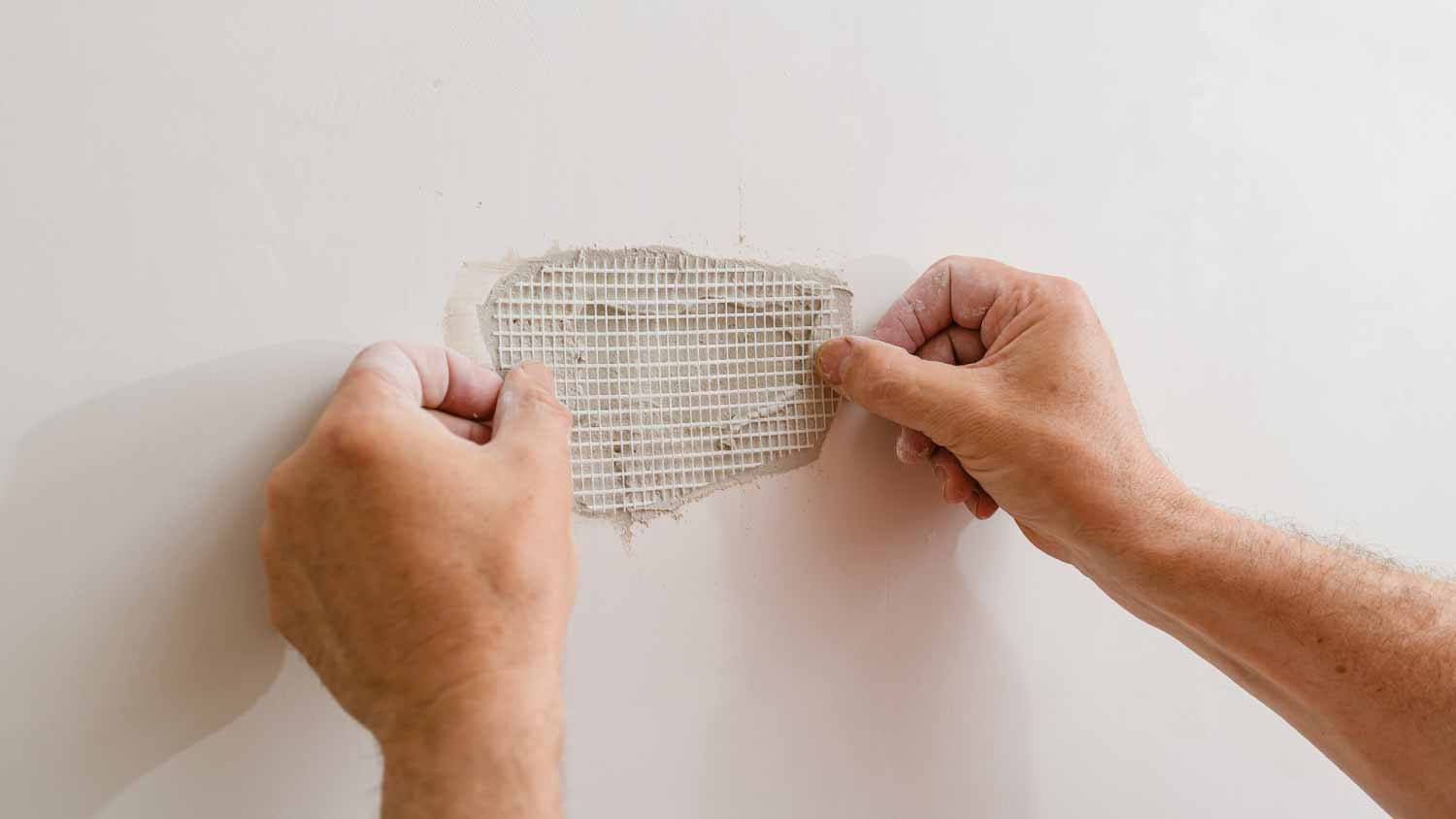
Skim coating drywall is a great alternative to replacement, and is often more affordable. Use this guide to estimate the cost to skim coat walls in your home.
Realistic drywall finishing times that won’t leave you hanging


Drywall installation involves hanging, taping, mudding, and sanding before the drywall is ready for paint.
Basic framing and standard wall heights make installing drywall easier and faster.
Drywall comes in different types that may require special tools and techniques, which can extend installation times.
Depending on the size of the home, crew, and framing complexity, drywall installation can take anywhere from six days to three or four weeks.
From finishing a single room to drywalling a new build, the question of how long it takes to finish drywall can plague your thoughts when planning a project timeline. Drywall installation times vary from one project to another and can range from a few days to several weeks. Keep reading to get a better idea of how the specifics of your project will affect finishing times.
While hanging the drywall might be your biggest concern, it’s not the final step in the process. Drywall installation includes:
Hanging the drywall
Taping the seams
Mudding the seams
Sanding
Texturing (optional)
For a 2,000-square-foot home, here’s how long each step of the drywall installation process takes:
| Step | Estimated Time to Complete |
|---|---|
| Hanging the drywall | 2–4 days |
| Taping and mudding the seams | 2–5 days |
| Sanding | 1–3 days |
| Texturing (optional) | 1–3 days |

If you consult a local drywall installer, they’ll need some project details to give you an accurate estimate. You’ll need the same details if you take on the project yourself.
Square footage is critical to buying the right amount of drywall. Whether you’re building a new home or installing new drywall in a few rooms, you'll need to know the wall footage for an accurate assessment.
Here’s roughly how long it would take an experienced crew to finish drywall projects of different sizes:
| Drywall Project Size | Estimated Time to Complete |
|---|---|
| Single room | 2–3 days |
| 1,000 square feet | 4–7 days |
| 2,000 square feet | 7–10 days |
| 3,000 square feet | 10–14 days |
Windows, curved corners, and other framing structures can add time to drywall installation. Installers have to make custom cuts to accommodate even the most basic of features like windows and doors. The more of those elements there are, the longer it takes to install the drywall.
Standard drywall sheets are 4-by-8 feet. Consequently, any wall over 8 feet tall (the industry standard) complicates drywall installation. Even walls only 1 foot above the standard 8 feet will require custom cuts and more drywall sheets, increasing the time it takes and the cost of labor.

Drywalling is also done in levels ranked from level 0 to level 5. The room's location and how it will be used determine the drywall finish level. For example, level 0 is attaching the drywall to the ceiling or walls but not taping or other finishing. Level 5 includes several layers of texturing and a skim coat that’s best for high-visibility walls and ceilings.
When installing drywall in a 2,000-square-foot space, here’s how long the project will take depending on the drywall finish level:
| Drywall Finish | Estimated Time to Complete |
|---|---|
| Level 0 | 2–4 days |
| Level 1 | 3–6 days |
| Level 2 | 4–9 days |
| Level 3 | 5–10 days |
| Level 4 | 7–15 days |
| Level 5 | 10–20 days |
The type of drywall texture you choose will also affect how long it takes to apply. Textures applied with a spray gun (like spray sand and orange peel) require less time and labor than hand-painted textures (such as Venetian plaster). If you choose a hand-painted texture, it could take twice as long to apply, which will increase the cost to texture the drywall.
If you want a good finish on your wall, it's absolutely worth it to pay for professional taping and mudding. Many DIYers are tempted to pay someone to hang the drywall and do the rest themselves, but this is one area where a skilled contractor can make a huge difference.
Your drywall project may be inside, but the weather outside can stop your progress. High humidity or rainy weather can prolong mudding, which may require multiple layers. If you have to wait a day for layers to dry in wet weather, it can take several days to finish mudding.
You’ll need at least two people to install drywall, as the sheets can be heavy and difficult to maneuver. However, the more people and the more experienced they are, the faster the drywall will get installed.
A large crew of experienced drywallers can quickly complete a standard project. They also know how to texture drywall efficiently. Large, experienced crews will cost more, though the quality of the finish might be worth it.
Drywall comes in various types, including fire-resistant, soundproof, and mold-resistant. The type of drywall may require specific tools or installation techniques that can extend the installation time.
For example, soundproof drywall may be hung on a resilient channel, which has a flange that allows the drywall to vibrate independently from the studs. The process requires installing the drywall to the resilient channel’s flange in 12-inch increments, which can take longer than attaching it to a standard stud.
From average costs to expert advice, get all the answers you need to get your job done.

Skim coating drywall is a great alternative to replacement, and is often more affordable. Use this guide to estimate the cost to skim coat walls in your home.

Drywall texture can create an attractive finish and add dimension to your home’s walls. This guide breaks down the factors that influence the cost to texture drywall.

Whether you’re trying to keep noise in or out, soundproofing materials are the way to go. Use this guide to see how much it costs to soundproof a room.

Mesh drywall patches add strength to small drywall repairs. Learn why mesh patches are important and when to use this material for drywall repairs.

If you’re considering the pros and cons of hanging drywall vertically, most drywallers install it that way. Learn the best applications for this installation method.

With a drywall repair kit, you can fix small holes in an hour or so. Ready to get started? Here’s how to patch a hole in drywall in 10 easy steps.